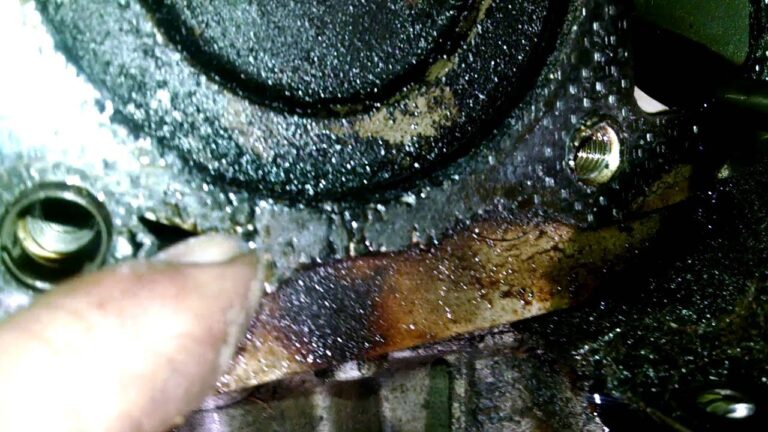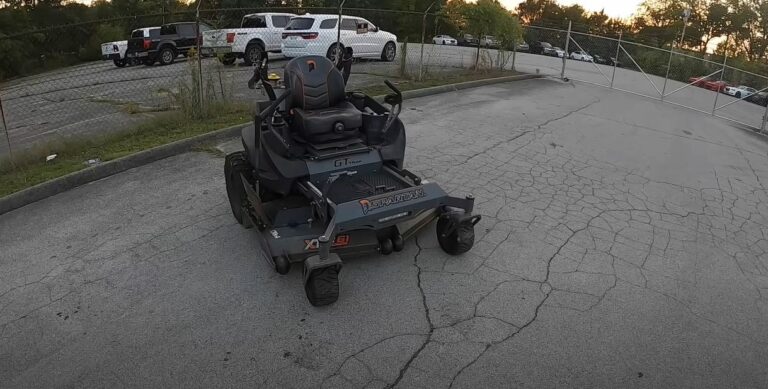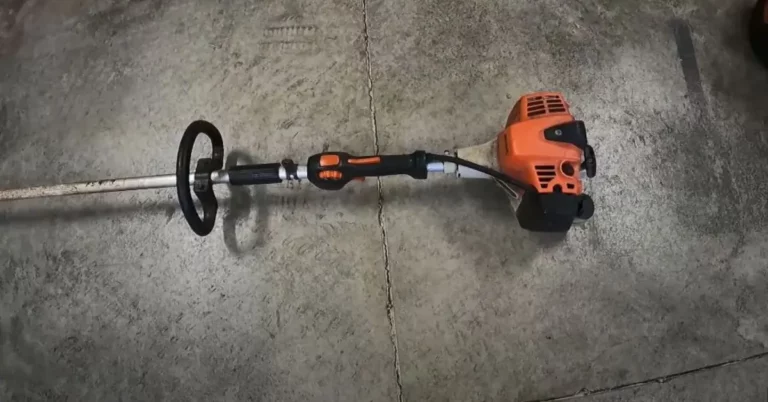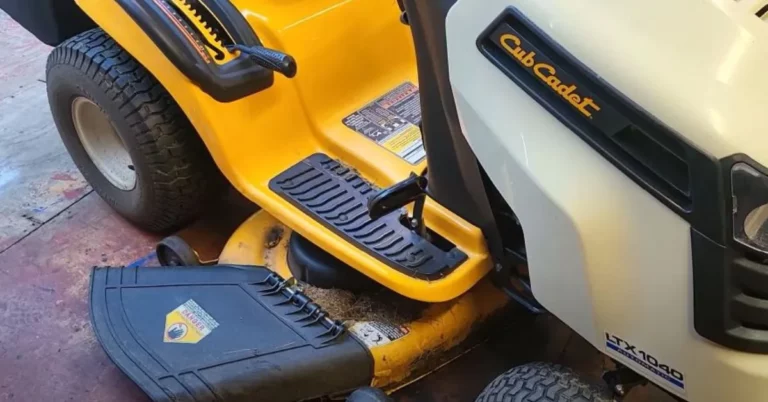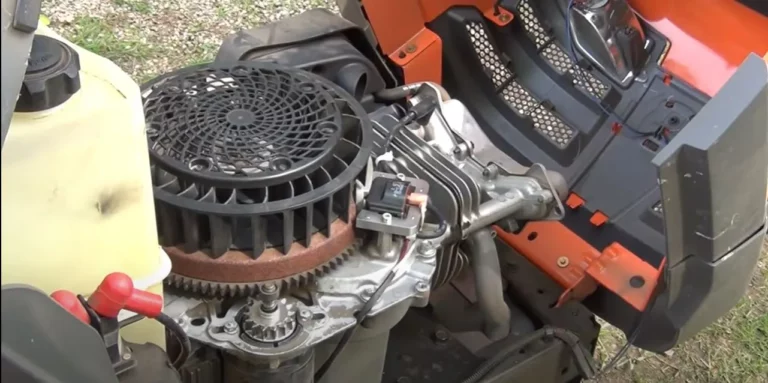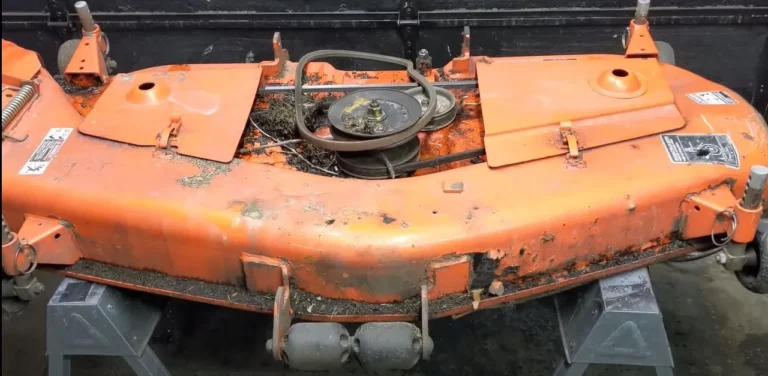Why John Deere Not Getting Fuel and How to Fix It?
Fuel is a vital necessity to run a John Deere tractor or mower. Without it, the equipment won’t even start.
However, sometimes, you may have fuel in the tractor or mower, but the equipment still fails to start. It may happen because the fuel is not reaching the engine.
People owning John Deere equipment often complain, “John Deere not getting fuel.” Unfortunately, there is not only one reason responsible for this ailment. Instead, multiple factors might be causing this issue.
It is extremely crucial to address this problem as soon as possible. Because if left untreated, your equipment won’t be able to perform properly. Moreover, it can also permanently damage the device if not timely solved.
But don’t worry! Resolving this problem is fairly easy. Continue with the following to learn extensively about the reasons and solutions of why John Deere not getting fuel to fuel filter.
Reasons Why John Deere Not Getting Fuel?
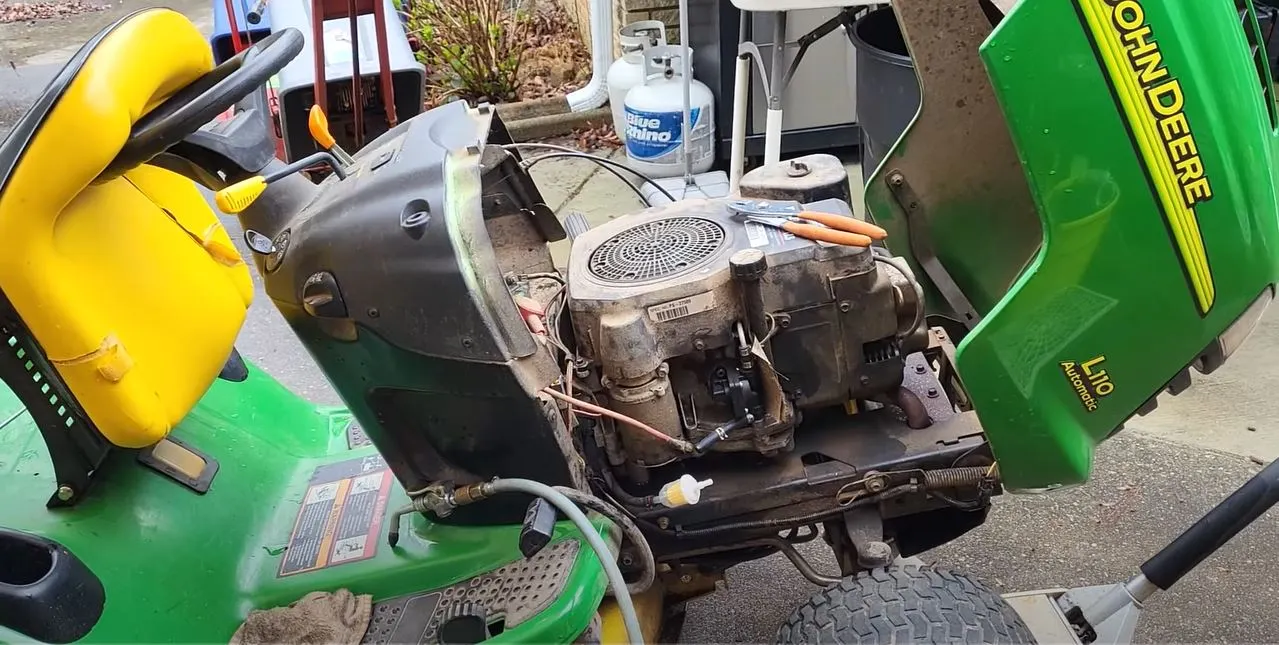
There are numerous potential reasons why your John Deere equipment is not receiving sufficient fuel. These include;
- Inaccuracy of Fuel Guage
The fuel gauge is attached to the pump. It performs an essential role in maintaining the fuel flow toward the filter and engine.
The fuel may not be able to reach the filter if the fuel gauge is inaccurate. Thus, before seeking other possible reasons, you must check whether the gauge works fine.
- Fuel Filter Clogged
An uncleaned or clogged filter might be responsible for why John Deere not getting fuel. Fuel filters are semi-permeable membranes. They only allow fuel to pass through them.
Debris, dirt, and scale particles cannot enter the engine as the fuel filter restricts their passage. Owing to this prevention, the engine performs better and lasts longer.
The filters used in John Deere equipment are “Gasoline fuel filters.” They are rated between 10 to 30 microns. Since their rating is minimal, larger debris particles can often get stuck in the filter’s pores.
When particles become stuck in the filter, it no longer has space to allow fuel flow. Therefore, you must clean the fuel filter from time to time to ensure that the fuel can easily reach the engine.
However, if the filter is too dirty or particles have permanently clogged its pores, you must replace it.
- Fuel Line Clogged
Another factor why fuel is not reaching the engine is because the fuel line is clogged.
The reason behind this aliment is the same as the previous one but with the notable difference that the fuel line is clogged here, not the filter.
Like the filter, the fuel line allows the passage of only selective substances. If big particles enter the fuel line, they may get stuck.
Sometimes, debris and dirt may also accumulate in the fuel line to form bigger particles.
To avoid this situation, you should clean the fuel line once in a while. Proper maintenance will keep the fuel line clog-free, implying a freeway passage for the fuel.
- Aerated Fuel Line
Not only do debris and scale particles clog the fuel line, but confined air can also restrict the fuel flow. When air accumulates in the fuel line, the equipment’s ideal air/fuel ratio becomes disrupted.
An aerated fuel line makes it difficult for fuel to reach the engine. Besides, it can also lead to rough idling, stalling, and overall diminished output.
Unfortunately, there is no DIY method to check whether air is accumulated in the fuel line. You must call for professional help, i.e., a mechanic, to inspect and troubleshoot this ailment.
- Fuel Pump Issues
A damaged or faulty fuel pump might be responsible for John Deere not getting fuel. A damaged fuel pump will not show up on its own.
Instead, it affects the overall performance of the equipment, making its diagnosis difficult.
You can test the condition of the filter pump by using a code reader or scanner. These devices determine the functionality of the equipment by looking for “Diagnostic Trouble Codes (DTC).”
Most of the time, the fuel pump’s DTC is situated in the equipment’s computer. These codes directly indicate an issue in the pump or imply instability in the air/fuel ratio.
You can easily verify whether the fuel pump works appropriately by checking these codes through a scanner or code reader.
If the codes in the scanner align with the fuel pump’s DTC, it may indicate a fault in the pump or its related components.
And this fault pump will be ultimately responsible for why the “John Deere Gator not getting fuel.”
- Ignition System Issues
The ignition system is essential in maintaining the fuel flow toward the engine. If any of its components, i.e., spark plug, ignition module, or coil, is defective, it may lead to the overall failure of the ignition system.
Similarly, the fuel won’t reach the engine if the ignition system fails. Therefore, to ensure the engine receives sufficient fuel, you must ensure the ignition system has a positive operational status.
- Electrical Issues
The internal wiring system issues may also restrict the fuel from reaching the filter and engine. These electrical issues can reside in any part of the equipment, i.e., the fuel pump, engine, or central system.
Also Read: John Deere Fault Code List
Solutions to Why John Deere Not Getting Fuel
Now that you are familiar with the reasons why John Deere not getting fuel, let’s scrutinize their solutions.
Solution 1: Replace the Fuel Guage
Now you know the fuel gauge is causing the problem; you will need to either repair or replace it.
To do so, you must open the equipment and take out the concerned part. If you have DIY skills, repair it. But if not, then it is suggested to call for professional help.
Solution 2: Clean or Replace the Fuel Filter
Once you have realized that the fuel filter is faulty and restricting the fuel flow, you should clean it.
But if the filter is too dirty and the issue does not resolve even after cleaning, you will have to replace the filter.
To remove the fuel filter, you will first have to remove the fuel line. You can use clamps, a wrench, and a socket set to remove these parts.
Then install a new fuel filter and place back the fuel line in the equipment.
Before closing everything, check whether there are any leaks. You can check the leaks by starting the engine.
If the fuel leaks, you must not have properly installed the filter. You will need to set up the filter again to correct the mistake.
Solution 3: Clean the Fuel Line
A clogged fuel line needs thorough cleaning if it is clogged. To clean the fuel line, first, de-assemble the equipment.
Once you reach the engine, you will find the fuel line there. The fuel line will be attached to the engine from one side and the carburetor from the other.
Remove the fuel line using clamps, socket set, and fuel line disseminator. Remember! You cannot use water to clean the fuel line.
You must use a dry cloth or air dryer to remove dirt from the fuel line.
Once cleaning is done, you can reinstall the fuel line in the equipment and ensure it is leak-proof.
Now reconnect the spark plug to the socket. This time you will notice an improvement in fuel consumption by the engine.
Solution 4: Removing Air from the Fuel Line
As stated earlier, no DIY method can help you detect aeration in the fuel line. You should consult a technician to verify whether the aerated fuel line restricts fuel flow.
Once the mechanic verifies this problem, you can de-assemble the equipment. Take out the fuel line and soak it in fuel. Besides, soak the fuel filter as it must have dried due to aeration.
Now re-assemble the equipment and start the engine. Doing so will help to remove the leftover air from the fuel line.
But if the fuel level drops again, you will have to repeat the process until the problem solves.
Solution 5: Change the Faulty Parts of the Pump
Use a DTC scanner or code reader to determine which fuel pump parts are faulty. Once the issue is detected, you can remove the defective part.
If the part is repairable, you can resolve the issue. But if it is too damaged, you must replace it.
Solution 6: Replace the Defective Parts of the Ignition System
Similarly, if the issue lies in the ignition system, check which component is the causing factor. After replacing the faulty part, you will notice an improvement in fuel delivery to the pump.
Solution 7: Repair Wires and Loose Connections
Sometimes, the simplest aspects can cause significant problems. Your equipment might not be taking up fuel due to loosened connections or defective wiring.
Most of the time, these defects can be solved by DIY repair. But if you want to resolve the problem once and for all, you can replace the wires and restore the fuel levels.
Also Read: 4 Best John Deere Cool-Gard Alternatives
Frequently Asked Questions (FAQs)
Why is John Deere not starting after the gas runs out?
If your John Deere is not starting after the gas runs out, it is possibly because air has stuck in its fuel line.
How to know whether the John Deere fuel pump has gone bad?
If the equipment’s engine is stalling or making unusual noises, it probably means that the fuel pump is defective.
Why is my John Deere cracking but not starting?
If your John Deere is cracking but not starting, then it may be possible that the fuel is not reaching the engine. It happens when either the filter or the fuel line is clogged.
Conclusion
Solving the John Deere not getting fuel issue is relatively simple. However, before troubleshooting the problems, you need to know the root cause of the issue.
Those who have viable DIY skills should only take the repairing risk. If you are doing it for the first time, you may damage other parts or be unable to conceal leakages.
In this case, calling for professional help is the best solution, as it can save your equipment from permanent damage.

